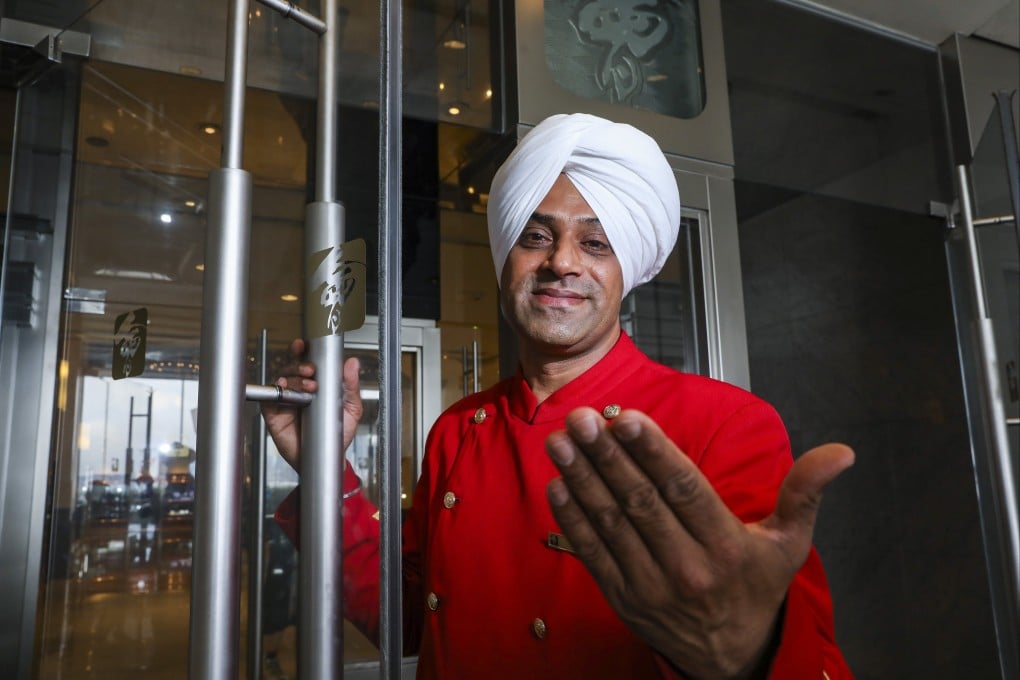Then & Now | How Sikh doormen became a symbol of old Hong Kong, welcoming visitors to banks, hotels and homes
- The liveried Sikh doorman, a once-ubiquitous feature of high-end establishments and affluent homes in Hong Kong, has all but disappeared

Such jobs kept them on their feet all day, rain or shine, and usually well into the night, but were otherwise physically undemanding.

Jackets were generally some fetching red tint – anything from lolly pink to deep burgundy – along with swags of gold braid, frogged buttons, lavish epaulettes, silk turbans and astrakhan collars.

At Lane Crawford’s Central store, the pink-clad Sikh doorman remains a much-remembered childhood spectacle for many older Hong Kong Chinese. One friend, now in his fifties, particularly recalls an instance when, as a little boy, he stood astounded as perennially pink-clad socialite Brenda Chau alighted from her pink Rolls-Royce, the car door deferentially opened by her pink-clad chauffeur, and was then bowed and scraped inside the premises by the establishment’s pink-clad Sikh doorman, to whom she was clearly a familiar figure. In my friend’s memory, Chau carried a Henry Steiner-designed Lane Crawford shopping bag, also a fetching shade of pink. The dramatically overstated, sticky-cloying “elegance” and “pinkness” of the scene has never been forgotten.
